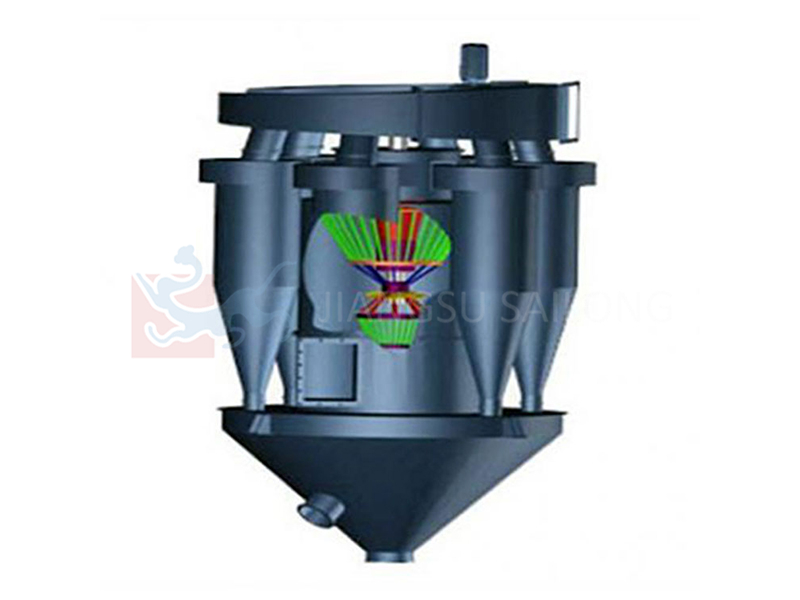
How Long Does a Rotary Dryer Last? Lifespan Explained
Introduction
Rotary dryers are essential industrial equipment used across various industries, including agriculture, mining, chemical processing, and food production. These machines are designed to remove moisture from bulk materials through a rotating drum and heated air. Given their critical role in production processes, understanding their lifespan is crucial for maintenance planning, budgeting, and operational efficiency.
This article explores the factors influencing the lifespan of a rotary dryer, typical longevity expectations, maintenance best practices, and signs of wear that indicate replacement may be necessary.
Factors Affecting Rotary Dryer Lifespan
The lifespan of a rotary dryer depends on several key factors, including design, material quality, operating conditions, and maintenance practices.
1. Design and Construction Quality
The durability of a rotary dryer starts with its design and materials. High-quality dryers are built with:
- Thick, wear-resistant steel for the drum and flights
- Robust bearings and seals to prevent leaks and reduce friction
- Proper insulation to maintain thermal efficiency
Dryers designed for heavy-duty applications (e.g., mining or chemical processing) typically last longer than those used in lighter industries due to reinforced construction.
2. Material Being Processed
The type of material being dried significantly impacts wear and tear:
- Abrasive materials (e.g., sand, minerals) accelerate wear on the drum and flights.
- Corrosive materials (e.g., chemicals, salts) can degrade metal components over time.
- Sticky or high-moisture materials may cause buildup, leading to inefficiencies and mechanical stress.
3. Operating Conditions
- Temperature: Excessive heat can warp metal components.
- Moisture levels: High humidity in the environment may contribute to rust.
- Load capacity: Overloading the dryer strains the motor and bearings.
- Continuous vs. intermittent use: Dryers running 24/7 wear out faster than those used intermittently.
4. Maintenance Practices
Regular maintenance is the most significant factor in extending a rotary dryer’s lifespan. Key practices include:
- Lubrication of bearings and gears
- Inspection of seals and gaskets
- Cleaning flights and drum interior to prevent material buildup
- Monitoring belt tension and alignment
Neglecting maintenance leads to premature failure of critical components.
5. Environmental Factors
- Outdoor installation exposes the dryer to weather-related corrosion.
- Dusty or humid environments increase wear on moving parts.
- Exposure to saltwater or chemicals accelerates rust and degradation.
Typical Lifespan of a Rotary Dryer
With proper maintenance and optimal operating conditions, a well-built rotary dryer can last:
- 15–25 years for high-quality industrial dryers
- 10–15 years for standard models in moderate conditions
- 5–10 years for dryers processing highly abrasive or corrosive materials
However, individual components may need replacement sooner:
- Bearings & Seals: 3–7 years
- Drum lining/flights: 5–10 years (depending on abrasion)
- Drive belts & motors: 5–8 years
Signs Your Rotary Dryer Needs Replacement
While regular maintenance can prolong a dryer’s life, certain signs indicate it may be time for a replacement:
1. Excessive Vibration or Noise
Unusual vibrations or grinding noises often signal bearing failure, misalignment, or structural fatigue.
2. Reduced Drying Efficiency
If drying times increase despite proper maintenance, internal wear (e.g., flight damage or insulation breakdown) may be the cause.
3. Frequent Breakdowns
If repairs become too frequent or costly, investing in a new dryer may be more economical.
4. Visible Wear or Corrosion
Severe rust, cracks, or warping in the drum or support structure compromise safety and performance.
5. High Energy Consumption
Aging dryers lose thermal efficiency, leading to increased fuel or electricity costs.
Extending the Lifespan of Your Rotary Dryer
To maximize longevity, follow these best practices:
1. Regular Inspections
- Check bearings, seals, and belts monthly.
- Inspect the drum interior for wear or buildup.
2. Proper Lubrication
Use manufacturer-recommended lubricants for bearings and gears.
3. Material Handling Adjustments
- Avoid overloading the drum.
- Pre-treat sticky or highly abrasive materials if possible.
4. Thermal Efficiency Maintenance
- Ensure insulation is intact.
- Monitor exhaust temperatures to detect inefficiencies early.
5. Upgrading Components
Replace outdated parts with modern, wear-resistant alternatives (e.g., ceramic-lined flights).
Conclusion
The lifespan of a rotary dryer varies based on design, usage, and maintenance. While high-quality dryers can last over two decades, harsh operating conditions or poor upkeep may shorten their service life. Regular inspections, proper lubrication, and timely repairs are essential for maximizing longevity.
When a dryer shows signs of excessive wear, inefficiency, or frequent breakdowns, replacement may be more cost-effective than continued repairs. By understanding these factors, operators can make informed decisions to ensure reliable and efficient drying operations for years to come.
Would you like additional details on specific maintenance schedules or component replacement guidelines? Let me know how I can further assist!
This website uses cookies to ensure you get the best experience on our website.
Comment
(0)